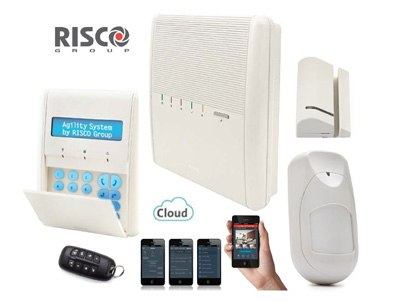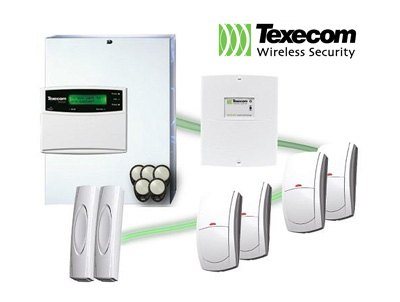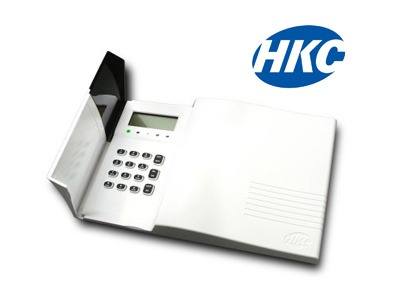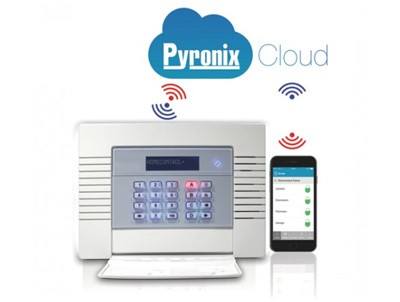Wireless Burglar Alarms
If you own your home it's probably your most valuable and important asset. So, it makes good sense to protect it properly. These days, a wireless home alarm system is overall the cheapest, most efficient way to protect your home and possessions.
The Evolution of Wireless Technology
Up to a point, the history of wireless technology is also the history of radio. The first wireless communication system was the telegraph, developed by Guglielmo Marconi in 1886. Commercial "radiotelephone" service followed in 1927, the first car-based mobile phone system in 1946, and the first city-wide mobile systems in the 1950s, used by taxi services and police forces. What we now think of as wireless technology—mobile phones, Bluetooth, and wireless internet—are relatively new developments in the evolution of wireless communication.
Wireless tech is moving fast. 4G was only introduced in 2010 and now, less than ten years later, 5G — the newest generation of wireless technology — is now available in parts of the UK. Each new generation of wireless technology brings higher bit rates and an increased capacity for multiple simultaneous transmissions. As well as this, next-generation technology opens up the possibility of adapting wireless technology for products that were previously only available in wired versions. There are many examples of previously wired products that have become available as wireless versions. The classic example is the phone but there are many others, including computers and their associated peripheral devices, and of course security systems.
Wireless Alarms and Security Systems Options
The technology with which home security systems operate has remained the same for most of the last century. It's only now, with the advent of wireless technology, that fundamental changes in the way home security systems operate have come about. With those changes have come some real advantages for property owners.
If you have an old wired security system and are thinking of upgrading — or if you don't have a security system at all — there are many potential advantages to upgrading to a wireless burglar alarm system as seen in our wired vs wireless alarm comparison Recommended Read
Wireless alarm systems are usually less expensive than wired systems and because all of the components of the system are wireless, the entire system is easier to install, relocate, and upgrade, too. Each separate component can be placed anywhere in the home without the need to work within the limitations of wiring. There's no need for drilling holes through the property in order to install and hide unsightly wires, which is often a concern for landlords if you live in rented accomodation.
There are four grades of security systems that are suitable for private homes. Grade 1 systems are the least secure option. These will typically deter an opportunistic burglar, but won't keep out an organised thief who has the tools to bypass a wireless security system. Grade 2 and 3 systems are designed on the basis that an intruder is likely to have some specialist knowledge and tools that help them infiltrate or inactivate a security system. Grade 3 systems provide a higher level of security, grade 4 even higher, although for most homeowners a Grade 2 system will suffice.
Some professional grade wireless system manufacturers include:
Risco: Manufacturers of the award winning Agility 3 wireless smart alarm system. The Agility 3 is a professional grade 2 two-way alarm system which operates on the 868 MHz frequency band. This system offers customers the choice of upgrading traditional motion sensors to camera PIRs which take a snap-shot of images when the alarm is activated and sends them to your smartphone via the secure cloud.
Texecom: Designs and manufactures several ranges of security products, designed to provide different levels of security. One of this company's most advanced wireless products is the Premier Elite Ricochet. This system's technology offers a more scalable solution for larger properties as it creates a wireless mesh network utilising the detectors to relay signals from the control panel, back and forth, thus extended the wireless range.
HKC Security: Produces wired and wireless security systems and components for industrial and residential customers. Makers of the Quantum 70, a two-way wireless panel created specifically for residential and small commercial markets.
Pyronix: Makers of the Enforcer, a two-way 868 MHz wireless security system with excellent battery life and a good range of components and options. Pyronix have recently launched their HomeControl+ app, which enables their enforcer system to alert your smart phone when the alarm activates.
These systems are professional grade and come with encryption and anti-jamming technology. They are also the most popular choice for qualified alarm engineers to install.
Click here and use our alarm cost calculator to get a rough idea of what a professionally installed wireless alarm, like the 4 mentioned above, would cost.
Wireless Frequency Bands
Many people mistakenly assume that wireless burglar alarm systems operate using internet-like wireless frequencies, but this is not the case. Wireless alarm systems actually use much lower frequencies than the standard 2.4 GHz that is used for WiFi. For wireless alarms the frequency range is between 400 and 900 MHz, because at these lower frequencies, wireless signals are much better able to penetrate through solid building materials and furnishings. Wireless internet uses 2.4 GHz because, while the penetration is much lower, much larger volumes of data can be transmitted at this frequency. In contrast, at lower frequencies data transmission is lower while penetration is higher. There's no need for large-scale data transmission for wireless alarm systems, but there is a need for high penetration, to ensure that there are no "dead spots" where coverage doesn't reach, and to improve the life of the batteries that the systems run on. This means the lower frequencies are ideal for wireless security systems.
Wireless intruder alarm systems operate at either 433 MHz or 868 MHz. Overall, 433 MHz is the more effective at penetrating through walls, ceilings etc than the higher frequency. Ultimately both are more than suitable for the average home and the downsides to 433MHz is that other kinds of wireless products use this frequency band more often than they use 868 MHz. For example, remote car-key systems use the 433 MHz frequency. Because fewer wireless products use 868 MHz it's often less congested, which means there's less likely to be random interference on this frequency.
One Way Vs Two Way Devices
All wireless alarm components use radio frequencies to communicate, but there are a couple of different kinds of radio frequency devices. These are one-way and two-way devices.
In a one-way system, each sensor has a transmitter and can send information to the receiver installed in the control panel.
One-way devices have some limitations that make two-way devices the superior option. For example, in a one-way system, each sensor must always behave as though the system is armed, because the control panel cannot send out status information. This means one-way systems must balance battery life with responsiveness and in some cases compromise on frequency and speed of status updates in order to preserve battery life.
With two-way systems, the sensors and control panel each have a receiver and a transmitter. This allows for two-way communication between the main alarm control panel and the devices, much like a telephone conversation. Without this bi-directional communication path the connection status or health of the device is unknown until the panel send out another test signal to the device. In some systems this delay is too long and becomes a security risk.
Another advantage of two-way systems is that jamming detection is more effective, because the ability of system components to have back-and-forth conversations allows for rapid detection.
Security Concerns
One security concern with wireless systems is known as wireless jamming. This is only possible by a skilled user with the appropriate RF jamming device. The RF jamming device may be able to intercept signals between a control panel and other components of a system, and render the system non-functional. For this reason, two-way systems are far superior as the constant back-and-forth communication between the wireless components (PIR's etc) and the control panel ensures this interruption is almost impossible to occur without being detected.
DIY Wireless Security or Professionally-Installed Wireless Systems?
Installation of wireless systems is definitely easier than for wired systems, so it's not difficult for a homeowner to install their own wireless security. The question is do you want to? By hiring a professional, you do get the advantage of having an expert take care of this for you. You don't have to be concerned about whether you installed the system correctly—and whether it's going to fail the first time it's tested. On the other hand, hiring a professional will cost more than doing it yourself.
How much more?
Wireless security installation (by a professional alarm company) will set you back around £500 to £900 for an average-size home, but how much you pay will vary depending on the size of your house or apartment and the level of coverage you want. A wireless DIY system which can be bought and self-installed for less than £350.
Wireless Smart Home Security
A new wave of wireless smart home technology is breaking into the DIY alarm market. As the Internet of Things (IoT) continues to grow, some big names join the party. Apple (with their Apple HomeKit and Home app available on iOS 10), Nest, Hive from British Gas, Amazon Alexa with voice recognition and Google Home (now launched) are all fighting their way to be the number 1 smart home provider.



